Armageddon and Apocalypses
Emergency Life Pack
Debuted in 1961, from the Survival Life Pack Company.Looks like you can still pick one up on eBay for around $199.99. (Though just the food/water, not the suit).
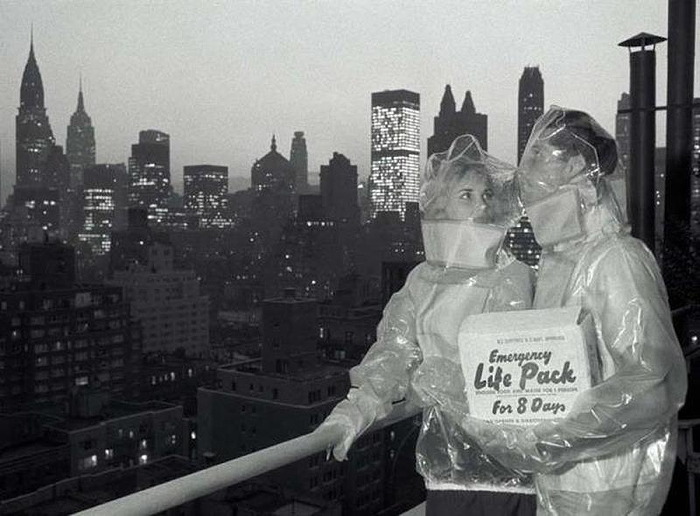
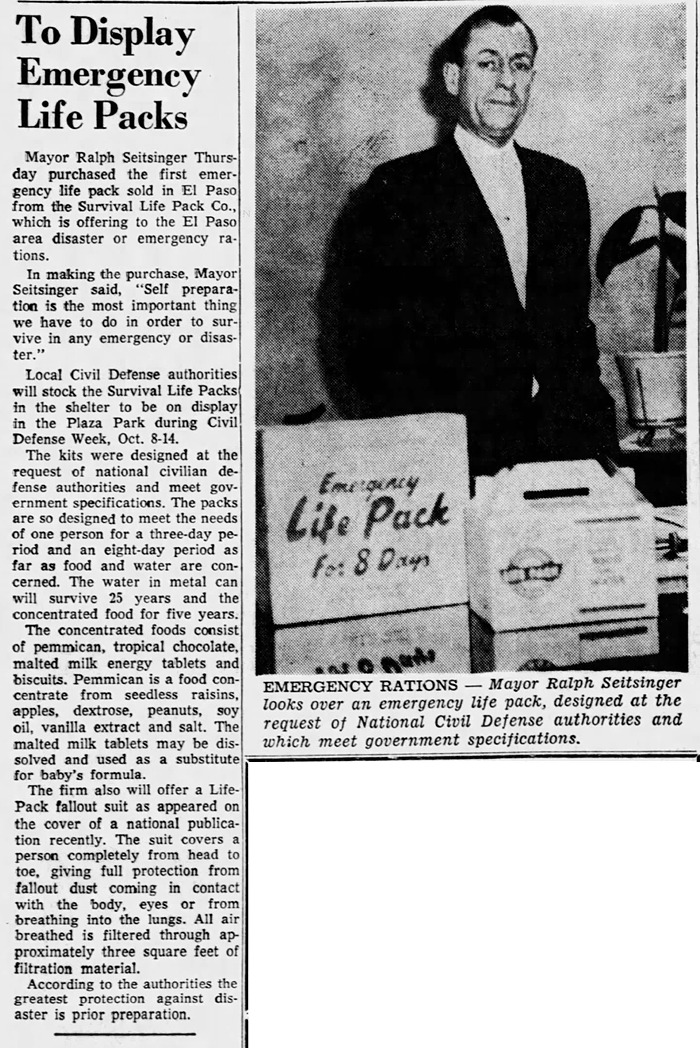
El Paso Times - Sep 22, 1961
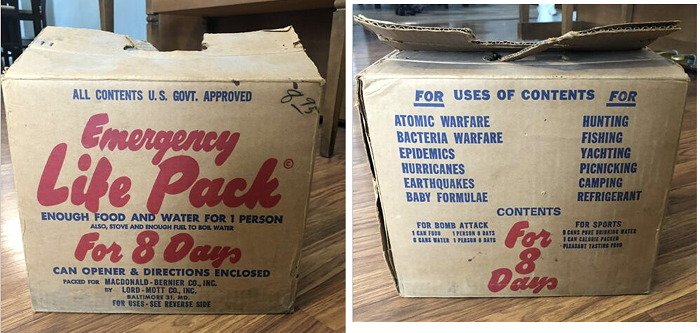
Posted By: Alex - Thu Mar 14, 2019 -
Comments (5)
Category: Armageddon and Apocalypses, Atomic Power and Other Nuclear Matters, 1960s
Doomsday Club
Back in 1975, $12,800 could have bought you membership in a “doomsday club.” Come doomsday, this would have allowed you to hide out in a secret, well-supplied location in northern California — where you’d be safe from rioters, zombies, etc.I wouldn't be surprised if the doomsday retreat hasn't burned down with all the recent fires.
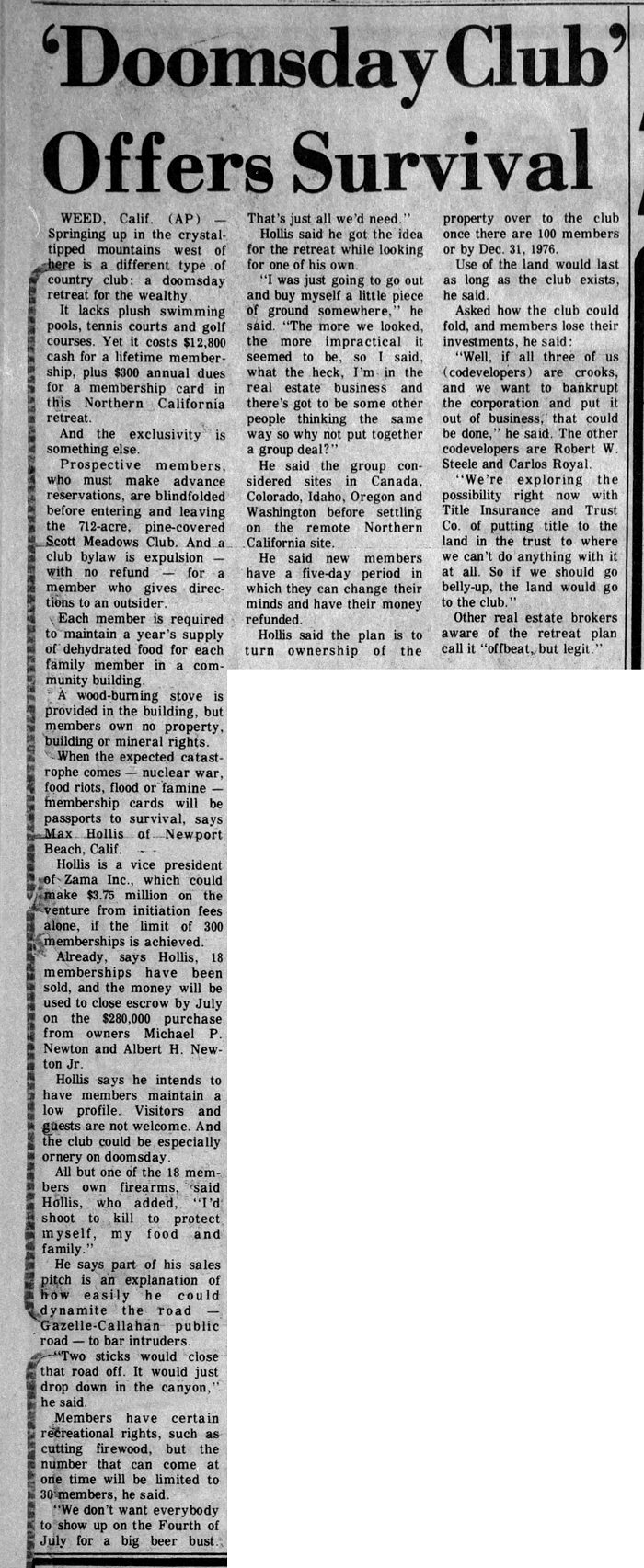
Newport News Daily Press - May 25, 1975
Posted By: Alex - Thu Feb 07, 2019 -
Comments (5)
Category: Armageddon and Apocalypses, 1970s
A Thief in the Night
Before there was the LEFT BEHIND series, there was this.Wikipedia entry here.
Posted By: Paul - Tue Jun 19, 2018 -
Comments (0)
Category: Armageddon and Apocalypses, Cult Figures and Artifacts, Ineptness, Crudity, Talentlessness, Kitsch, and Bad Art, Movies, Religion, 1970s
The Encyclopedia of World Problems
Do you not have enough problems in your life? Do the internet and other media fail to bring world problems to your attention? If this is your dilemma, rest easy! A solution is at hand! Simply visit THE ENCYCLOPEDIA OF WORLD PROBLEMS. There, you can choose from thousands of problems to worry about. Maybe you want something concrete, such as VIOLENT CRIME. Or maybe you'd like to focus on something more numinous, like UNMEANINGFUL RELATIONSHIPS TO PLACE. Whatever your worrying needs, you can rely on THE ENCYCLOPEDIA OF WORLD PROBLEMS to provide grist for your anxieties.Here is a picture and review of the first (print) edition from 1976.
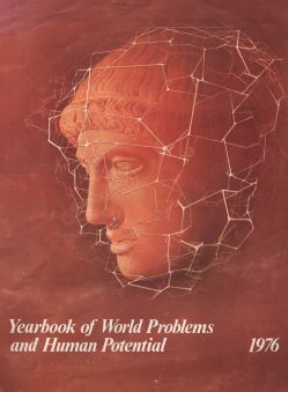
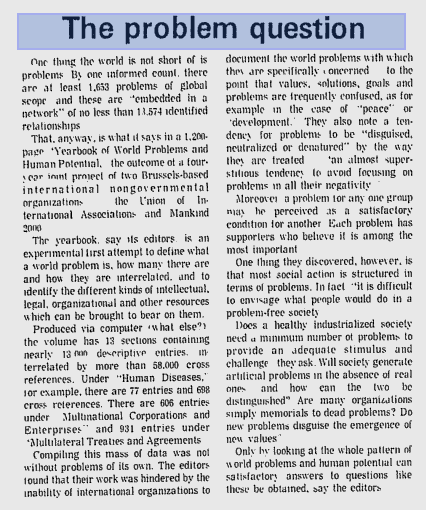
Source of article.
Posted By: Paul - Thu May 31, 2018 -
Comments (2)
Category: Addictions, Annoying Things, Armageddon and Apocalypses, Destruction, Disasters, Emotions, Moral Panics and Public Hysteria, Excess, Overkill, Hyperbole and Too Much Is Not Enough, 1970s
Fallout Filly
"Nobody likes my baby, cuz she shoots out gamma rays."
Posted By: Paul - Mon Feb 06, 2017 -
Comments (4)
Category: Armageddon and Apocalypses, Body Modifications, Music, 1960s, Parody
Atomic Armor for Children, 1951
Designed by Lee Pauwels of Los Angeles to protect his six-year-old son from harmful atomic rays given off by a nuclear explosion. He noted that the suit wouldn't protect his son from the concussion of the blast, "But authorities believe a person could survive the blast at much closer range if he were lying down and wearing the suit. Afterward he'd be able to leave the area that had become contaminated by harmful rays."I wonder if this suit still survives somewhere, stored in someone's attic. Well, it must be around if even atomic rays couldn't harm it. This is the kind of thing that should be on display in the Smithsonian (if I were running it).

The Eugene Guard - Jan 1, 1952
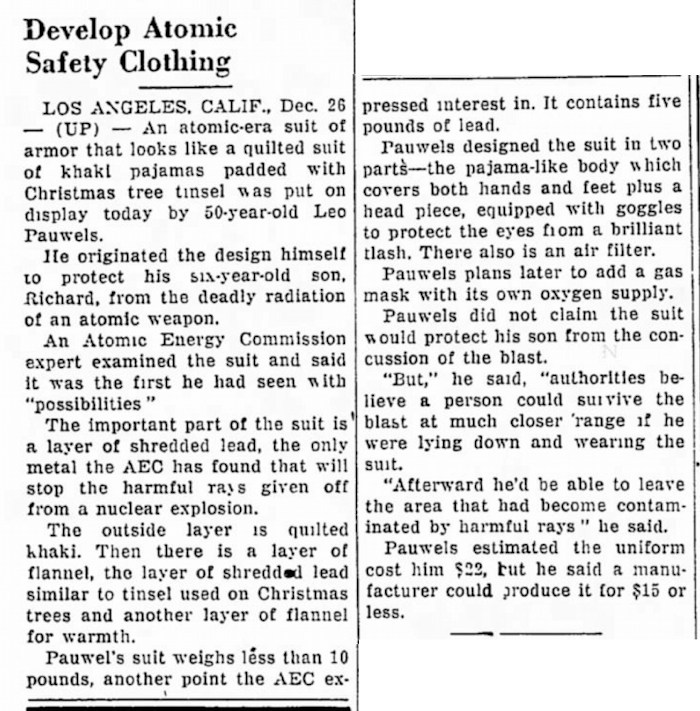
Traverse City Record-Eagle - Dec 26, 1951
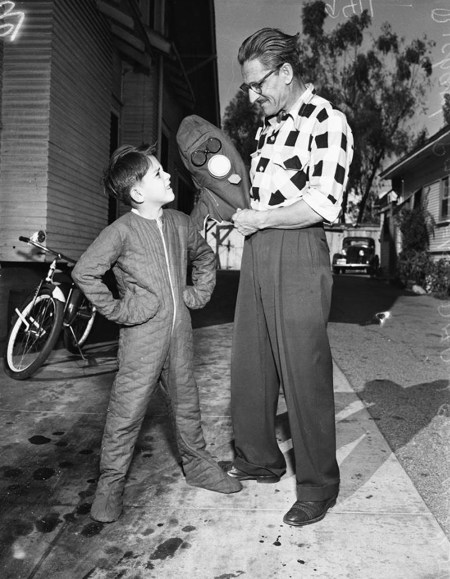

Posted By: Alex - Sat Nov 21, 2015 -
Comments (7)
Category: Armageddon and Apocalypses, Fashion, Atomic Power and Other Nuclear Matters, 1950s
Civil Defense PSAs
Posted By: Paul - Sun Jan 18, 2015 -
Comments (3)
Category: Animals, Armageddon and Apocalypses, Death, Destruction, PSA’s, 1960s
The Mark Of The Beast
.
NewDealDesign, a design house out of San Francisco, is behind an idea for implanted tattoos that carry information about the wearer that could be exchanged by touch. The Bible has long been quoted about the mark of the beast and the Anti Christ being from the Middle East, guess where the CEO of the company is from, just sayin'.
Posted By: Alex - Sat Oct 18, 2014 -
Comments (15)
Category: Armageddon and Apocalypses, Evil, Gods, Religion, Rituals and Superstitions
Nuke Lamp

Add a little armageddon chic to your home with the Nuke Lamp from VeneriDesign. It's yours for only $1,445.53.
If they're charging that much, couldn't they have rounded down to an even $1445?
Posted By: Alex - Mon Mar 03, 2014 -
Comments (7)
Category: Armageddon and Apocalypses, Furniture, Overpriced Merchandise
Life After Doomsday
Bruce Clayton's survivalist masterpiece, Life After Doomsday, certainly belongs in any collection of weird non-fiction. It comes from a time, not so long ago, when the general consensus was that we were all going to be blown to smithereens in a nuclear war, and Clayton offered detailed instructions on how to stay alive should you survive the actual bombs. Below is the 1981 Newsweek review of the book, as well as Clayton's diagram of how to turn your home into a fortified bunker. And hey, why not read it together with Paul's After the Collapse
His point is, you must do something: "The question of which assault rifle you should buy isn't nearly as important as the fact that you must get one" — to mow down ghetto refugees or your neighbors in search of your food supply. In fact, refugees won't be much of a threat because the roads will be blown up along with the cities, but as for your friend next door — well, the Heckler and Koch HK91 heavy-assault rifle firing a 7.62 NATO cartridge works very well. If you're on your roof hosing down the fallout, a Colt Commander .45 autopistol modified for combat is easier to carry. He shows us, too, how to convert our houses into efficient fire zones, and suggests we store away five years' supply of wheat, milk, sugar and salt. A wheat stew in every pot and an Armalite AR-180 in every loophole will see us through, as long as we've ordered our gas masks (Clayton tells us where).
Posted By: Alex - Tue Mar 12, 2013 -
Comments (2)
Category: Armageddon and Apocalypses, Books, 1980s

| Who We Are |
|---|
| Alex Boese Alex is the creator and curator of the Museum of Hoaxes. He's also the author of various weird, non-fiction, science-themed books such as Elephants on Acid and Psychedelic Apes. Paul Di Filippo Paul has been paid to put weird ideas into fictional form for over thirty years, in his career as a noted science fiction writer. He has recently begun blogging on many curious topics with three fellow writers at The Inferior 4+1. Contact Us |





